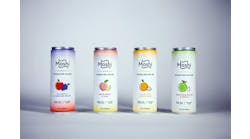I’m mourning the passing of an old and dear friend. For 15 years, one of the surest signs of spring for me in the unpredictable season-changing of Chicago has been the early-May arrival of the FMI Supermarket Show.
By many measures, I’m barely above rookie status when it comes to the Food Marketing Institute shows. My first one was “only” 1994, but it’s hard to forget the childlike awe of walking into a building as big as Chicago’s McCormick Place to find free food samples from one end of the building to the other.
These weren’t just any food products. They certainly were not low sodium/zero trans fat/fiber-enhanced/whole grain prototypes, since most of those issues were not yet on the radar screen (although I do remember fat-free Snackwells). These were the best, most decadent things the product development labs could turn out, from such companies as Haagen-Dazs, Ben & Jerry’s, Nabisco and Keebler.
It was like the spring fashion show of new food products. Every food processor had its most delectable things on display, all of them brand-new for the spring grocery season. All were meant to tempt the attendees, all grocers, into making room for them on their store shelves.
The retailers went home with full tummies — made all the fuller by the end-of-day stop at the Miller, Anheuser-Busch or Coors booth (or all three). I think I even remember Bacardi and other purveyors of hard liquor being there.
Although the food products alone were quite enough to make the show a hit, there was more. Chicago Cubs and Bears legends signing autographs. Betty Crocker signing copies of her cookbook. Pillsbury Bake-Off winners. FDA Commissioner David Kessler explaining the new Nutrition Facts panel. Even Ben Cohen and Jerry Greenfield in tie-dyed T-shirts, sometimes with a sport coat over top. After all, they were food company CEOs.
That was the 1990s. The FMI show has been in decline for a few years now. There is no Haagen-Dazs, Ben & Jerry’s, Nabisco or Keebler anymore. I recall one year noticing Sara Lee was missing. The next year Heinz. A year later Tyson was AWOL. And it’s been many years since I saw a CEO of a large food company attend.
Important trade shows seem to get caught in a vicious circle, partly the fault of the exhibitors, who feel the need to make a bigger splash each year. Trade show costs go up every year, I’m sure, but that’s exacerbated by burgeoning booths of companies trying to make an impression. “Exhibiting with a smaller booth than you had last year sends a negative signal to people,” one exhibitor at this year’s show told me. “It’s better to not show up than to show up small.”
Chicago’s McCormick Place is to blame, too. People involved in trade shows and we Chicago-area residents have heard the stories of the trade unions at the hall charging obscene amounts for plugging in an electric cord. Chicago has lost a few large shows because of that.
Chicago unwittingly is at fault, too, just for being itself. An attendee at this year’s FMI Show told me, “Chicago’s great, but going to the same town for 26 years gets old.”
So maybe it was inevitable that the FMI Show would change, perhaps evolve. This year’s show was in Las Vegas in early May, the first time it was outside of Chicago since 1982. Not in the Las Vegas Convention Center, but in the Mandalay Bay Convention Center (which was surprisingly roomy, though it seemed a several-miles walk from the hotel-casino’s front door). Kraft was still there, occupying a Kraft-sized booth, and so were Nestle, Coca-Cola and Anheuser-Busch (still my 5:00 stop every day). But 11 of the top 15 food processors were missing.
The show floor was missing the old excitement. There will be no FMI Supermarket Show at all next year, although FMI will hold some conferences in its place. The new incarnation will return to the same venue in Las Vegas in 2010.
And I’ll be there, if only to hope this was a one-year anomaly. I find it hard to believe there’s no market for a food products show anymore. I wish the food processors, perhaps under the stewardship of Grocery Manufacturers Assn., would collectively create one.
Maybe the answer is involving the public in some way. Paying an admission fee to eat all day seems like a reasonable request that could help amortize the costs. And after all, they’re the ones you’re supposed to be impressing. What better way to create demand for a new product and affinity for your brands? Maybe it could move to several large cities.
If the car manufacturers can stage an annual auto show with the slump they’re in, so can we. The fashion industry manages several every spring. Somebody call Ben and Jerry and see if they still fit in their tie-dyes. I’ll check with Ernie Banks.

